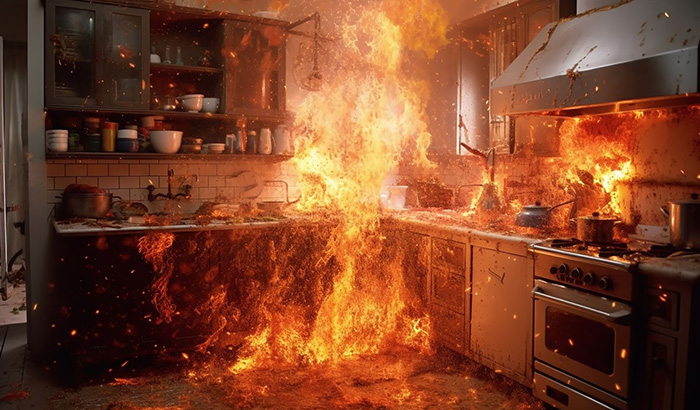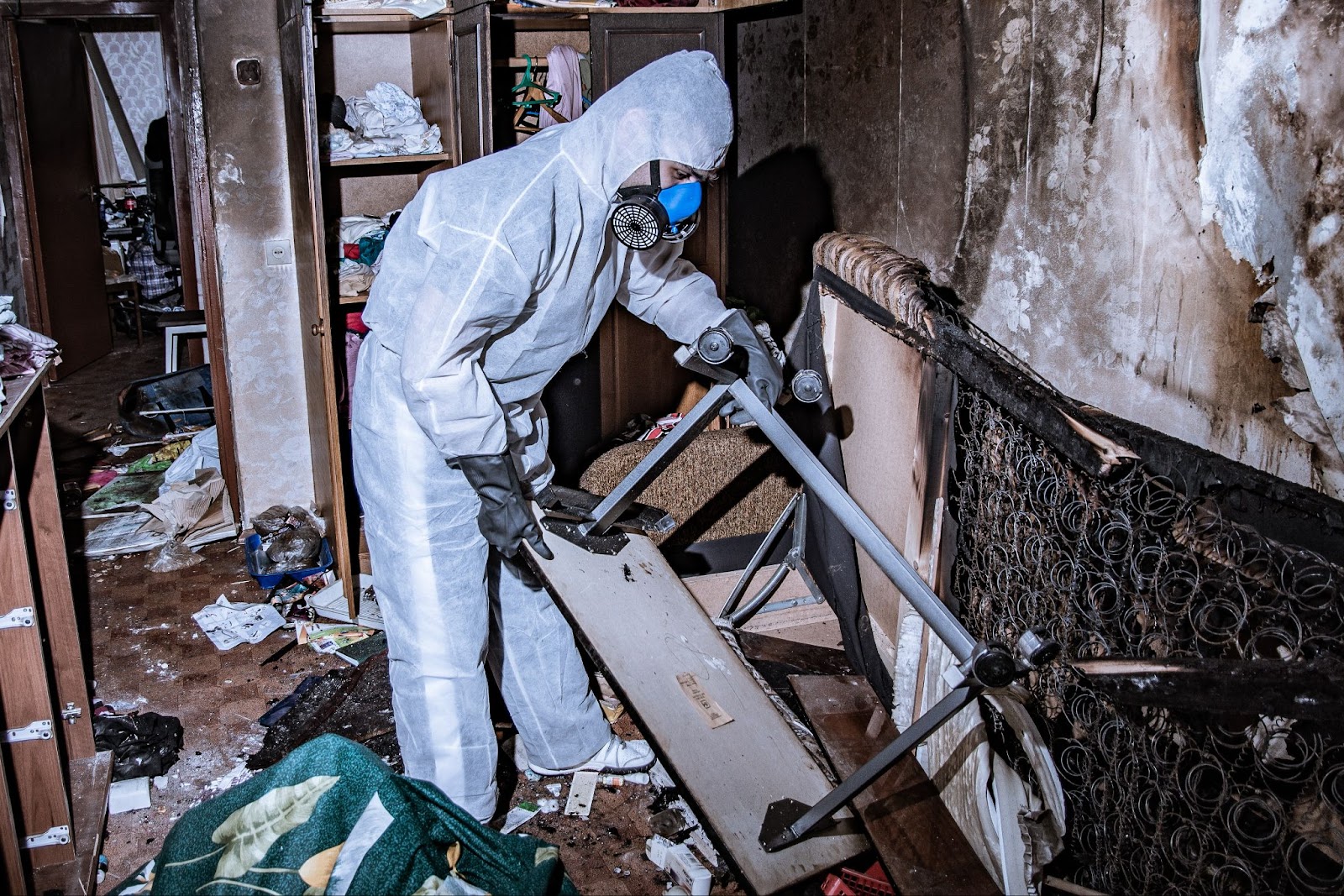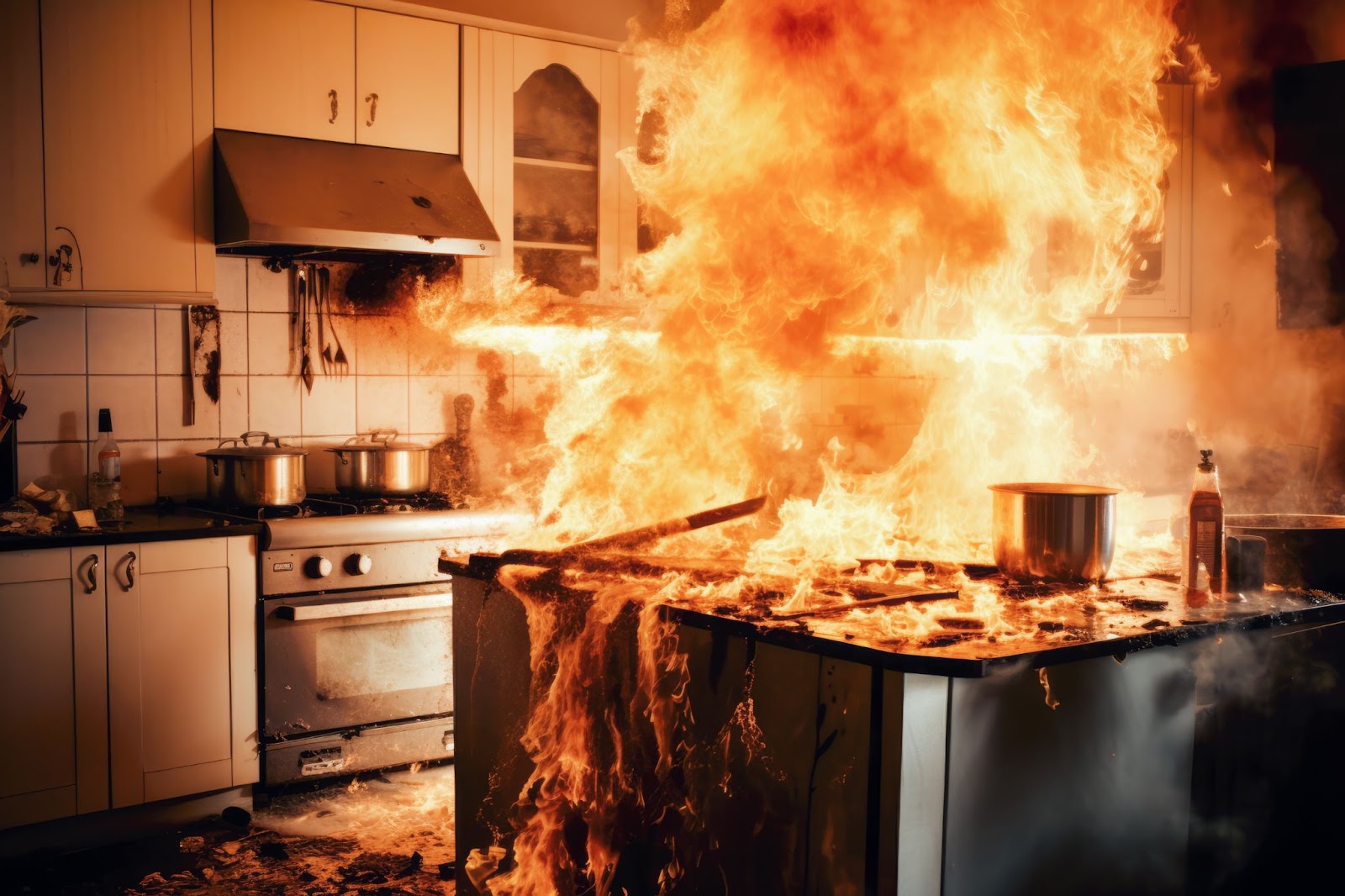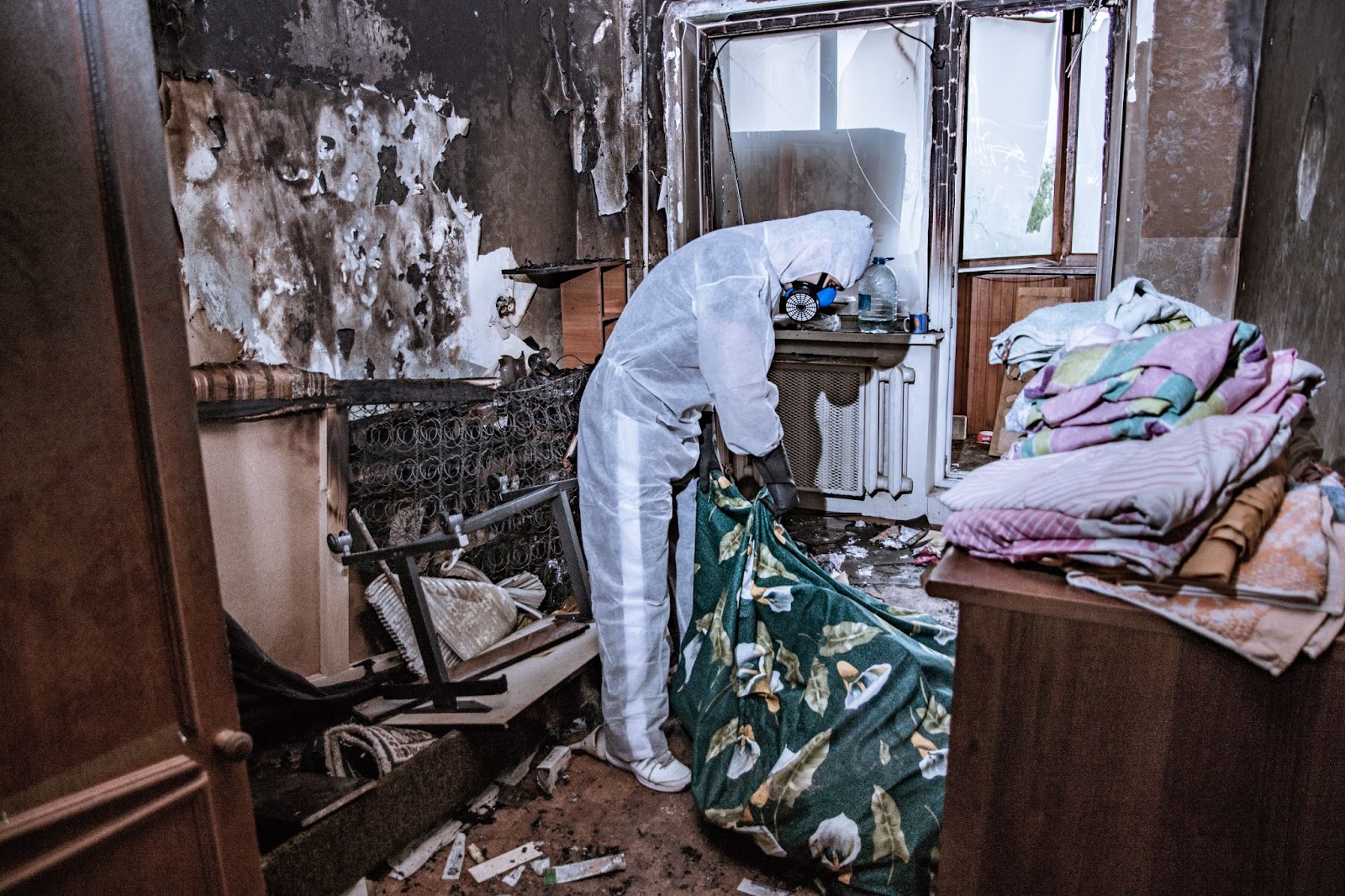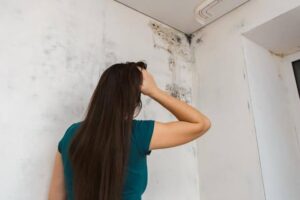In the wake of a house fire, a new journey unfolds that’s marked by the challenges of recovery and fire restoration. Yet amidst the ashes, there emerges a tale of resilience, as homeowners embark on the monumental task of reclaiming safety and normalcy within their charred homes.
As we enter the aftermath, dangers lurk unseen, with structural integrity compromised and toxic fumes concealed within the walls. Understanding the extent of post-fire damage becomes paramount, setting the stage for a comprehensive path toward rehabilitation.
Amidst this complexity, health hazards like lingering smoke odor and stubborn soot residue emerge as silent adversaries, further complicating the journey of healing and rebuilding.
This article is a guiding light, illuminating the obscured path of post-fire home rehabilitation. Each phase plays a crucial role, from navigating the intricacies of insurance claims to overseeing the meticulous restoration process.
Join us as we explore safeguarding personal belongings, collaborating with restoration experts, and ultimately, transforming the charred remnants of a house fire into a sanctuary once more.
The dangers of post-fire damage
Surviving a house fire is a harrowing experience, but the aftermath also poses significant risks. The damage a fire leaves behind also compromises the safety of what was once considered a safe haven.
When the flames die down, structural integrity becomes a top concern. Key support systems of a home, such as beams and load-bearing walls, may be weakened. Electrical wiring, plumbing, and HVAC systems are vulnerable to fire and may become latent hazards if not properly assessed and repaired.
Be wary of quick fixes and unvetted contractors; the goal is to restore the home safely, not simply provide a superficial solution.
Part of the danger lies in what’s unseen: heated plastics and chemicals release toxic fumes during a fire, which permeate structures and linger without professional intervention. Before re-entering a home, have a competent damage restoration company inspect it and declare it safe.
In the following sections, we’ll delve deeper into structural damage and the health risks of smoke and soot, both of which underscore the importance of expert restoration services in the healing process of post-fire home rehabilitation.
Understanding the impact of structural damage
Structural damage occurs when the materials comprising the home’s foundation and framework — such as wood, steel, and concrete — are compromised by the heat and flames.
A professional fire damage restoration assessment is the first step in determining the extent of the damage. Experienced restoration professionals will conduct a thorough inspection, identifying the areas ravaged by fire and those indirectly affected, such as water damage caused by firefighting efforts.
Once the extent of the damage is understood, the restoration team will stabilize the structure to prevent further risk to individuals or property. This often includes boarding up windows, securing a compromised roof, and shoring up weakened walls.
Insurance coverage typically plays a pivotal role in addressing structural damage. The insurance claim process will require documentation of all impairments, which is why the expertise of a restoration technician or damage restoration professional is indispensable.
Professionals will provide the necessary information to insurance carriers, help streamline the recovery process, and facilitate the availability of temporary housing if required.
Health risks associated with smoke odor and soot residue
The remnants of a fire, like smoke odor and soot residue, are serious health hazards. Smoke particles penetrate various materials, embedding an offensive odor that’s hard to eliminate without specialized techniques and equipment, such as air movers, ozone generators, and sealants.
When smoke and soot are inhaled, there may be damage to your respiratory system. This is especially true for those with preexisting respiratory conditions.
Smoke particles contain a mix of chemicals, including carbon monoxide, hydrogen cyanide, and other potentially carcinogenic substances. The tiny size of smoke particles allows them to travel deep into the respiratory tract, potentially leading to chronic respiratory illnesses, cardiovascular problems, and other health issues.
Soot consists of the fine black particles left behind after a fire that settle on surfaces and become airborne under disturbances. These particles irritate the eyes, skin, and lungs, leading to many problems, especially upon prolonged exposure.
Insurance coverage and claims process
When a fire devastates your home, understanding your insurance coverage and the claims process becomes crucial. Navigating this journey may be overwhelming, but with knowledge and the right support, it leads to a smooth restoration experience.
Working with your insurance company
Cooperation and open communication are pivotal when working with your insurance company. These steps facilitate a smoother interaction:
- Keep records: Maintain a paper trail of all correspondence, including dates and summaries of conversations.
- Ask questions: Understanding insurance terminology and procedures is challenging. Do not hesitate to ask your insurance agent for clarification.
- Negotiate if necessary: If you disagree with the compensation offered, it’s possible to negotiate. Provide additional documentation or get a second opinion from independent contractors if needed.
- Release of funds: After the claim is approved, the insurance company will release funds. These can be made available to you or paid directly to the restoration company.
Understanding your insurance policy and coverage
Your insurance policy is a contract that specifies what is covered, what is excluded, and under what conditions.
Here is a simple table to outline coverage types and what they typically include:
| Coverage Type | What It Typically Includes |
| Dwelling Coverage | Costs for structural repairs or rebuilding |
| Personal Property Coverage | Reimbursement for damaged or lost items |
| Additional Living Expenses | Costs for temporary housing, food, etc. |
| Liability Protection | Legal fees and damages if you are found liable |
As you assess your insurance policy, remember that the more you understand your coverage, the more empowered you are during restoration. Consider seeking the advice of a qualified insurance agent or a lawyer specializing in insurance law if there are aspects of your policy that are unclear or seem insufficient for your situation.
The restoration process
Home rehabilitation begins after the flames have been extinguished and the site is safe. The restoration process is both a science and an art, encompassing meticulous cleaning, repair, and sometimes replacement of damaged home elements.
Choosing a damage restoration company
Choosing the right damage restoration company is crucial and greatly influences the outcomes of your restoration project. Here are steps to guide you through the selection process:
Verify credentials
Ensure the company is properly licensed, insured, and bonded. This protects you but also signifies professionalism.
Evaluate experience
An established company with a track record of handling fire damage is more likely to deliver quality service.
Inspect their process
A company that follows a thorough damage restoration process, including assessment, mitigation, cleaning, and restoration, is preferable.
Check references
Seek reviews and testimonials from previous clients to gauge their satisfaction levels with the company’s services.
Assess communication
Choose a company that communicates clearly and provides detailed plans and timelines for the restoration project.
Consider availability
Post-fire situations require prompt action; thus, a company that offers emergency services and is readily available is vital.
When you have narrowed down the candidates, get written estimates and ensure they provide detailed breakdowns of the costs. Remember, the cheapest option may not always be the best for your home’s recovery.
Steps in the restoration process
The journey to restoring your home encompasses several vital steps. Here’s a streamline of the typical damage restoration process:
- Emergency contact: The restoration process begins with your initial call to the restoration company, ideally occurring as soon as possible after the fire has been put out.
- Inspection and fire damage assessment: The restoration team will inspect the extent of the fire, smoke, and soot damage to develop a plan of action.
- Immediate board-up and roof tarp service (if needed): To maintain security and prevent further damage, the company will board up missing windows and walls and place tarps on damaged roofs.
- Water removal and drying (if water damage is present): The team will remove any standing water and use air movers and dehumidifiers to dry the area.
- Removal of smoke and soot from all surfaces: Specialized equipment and techniques are used to clean smoke and soot from ceilings, walls, and other surfaces.
- Cleaning and sanitizing: All restorable items and structures will be cleaned and sanitized. Restoration companies use a variety of cleaning techniques to restore your belongings.
- Restoration: The final step involves repair or reconstruction to restore your home to its pre-fire condition. This might include minor repairs or may extend to significant reconstruction projects.
Each phase is critical in ensuring a comprehensive recovery from fire damage, delivering the peace of mind and the sense of security every homeowner deserves.
Working with restoration professionals
Restoration professionals are skilled in addressing both immediate and long-term needs, ranging from securing the property to executing detailed repair work. Here are critical factors that underscore the importance of hiring the right team:
| Importance | Description |
| Expertise | Qualified teams possess in-depth knowledge of the construction and restoration fields, ensuring all work meets industry and safety standards. |
| Efficiency | Trained professionals work systematically, which can expedite the healing and recovery processes, reducing the total time your home is under reconstruction. |
| Equipment | They have access to industrial-grade equipment capable of handling large-scale restoration tasks efficiently and effectively. |
| Insurance liaison | Experienced restoration teams can navigate the complexities of insurance claims, providing the necessary documentation to streamline the process. |
| Warranty | Reputable companies often offer a warranty on their work, adding an additional layer of security for homeowners. |
| Peace of mind | Knowing that the restoration of your most valuable asset is in the hands of certified professionals allows for a less stressful recovery period. |
Total Flood & Fire Restoration
For the assurance of professional expertise and support throughout the restoration process, rely on the experienced team at Total Flood and Fire Restoration.
Contact Total Flood and Fire Restoration or call 385-503-2846 for 24/7 help with any restoration service, from fire and smoke damage to water and mold remediation and more.

